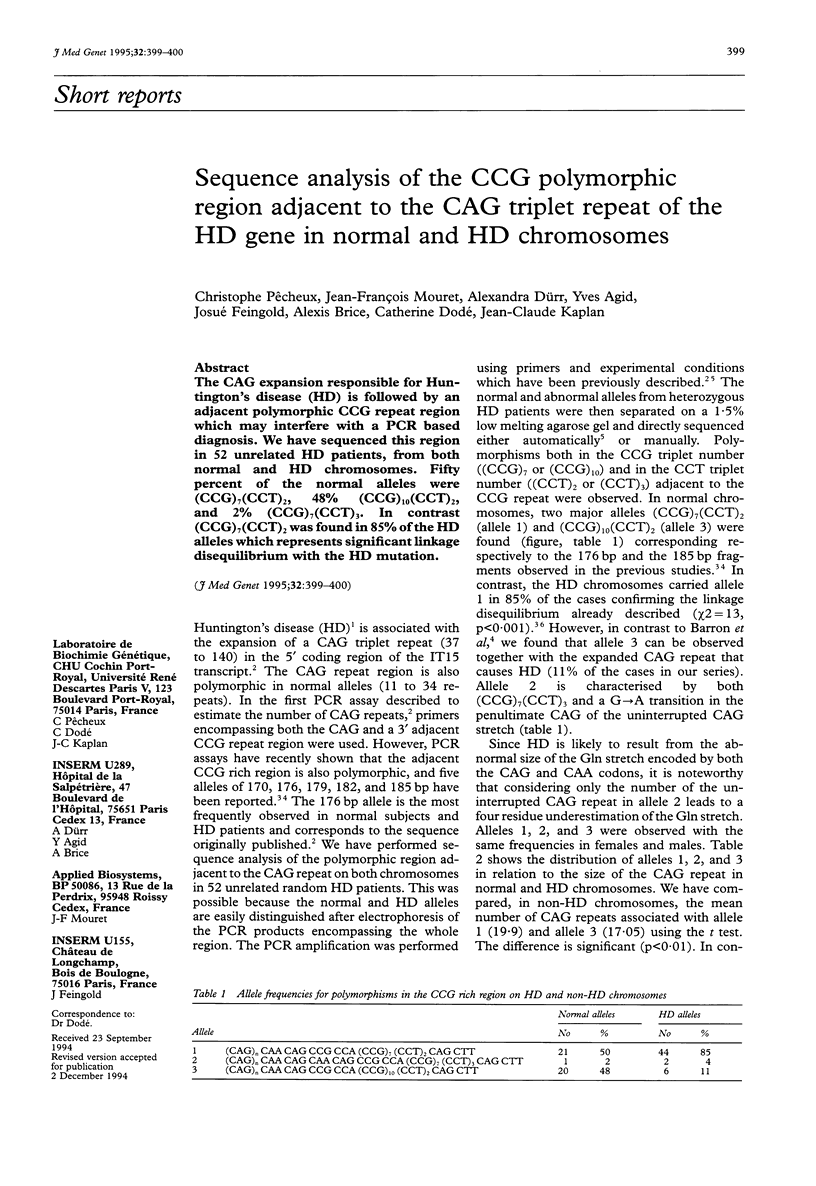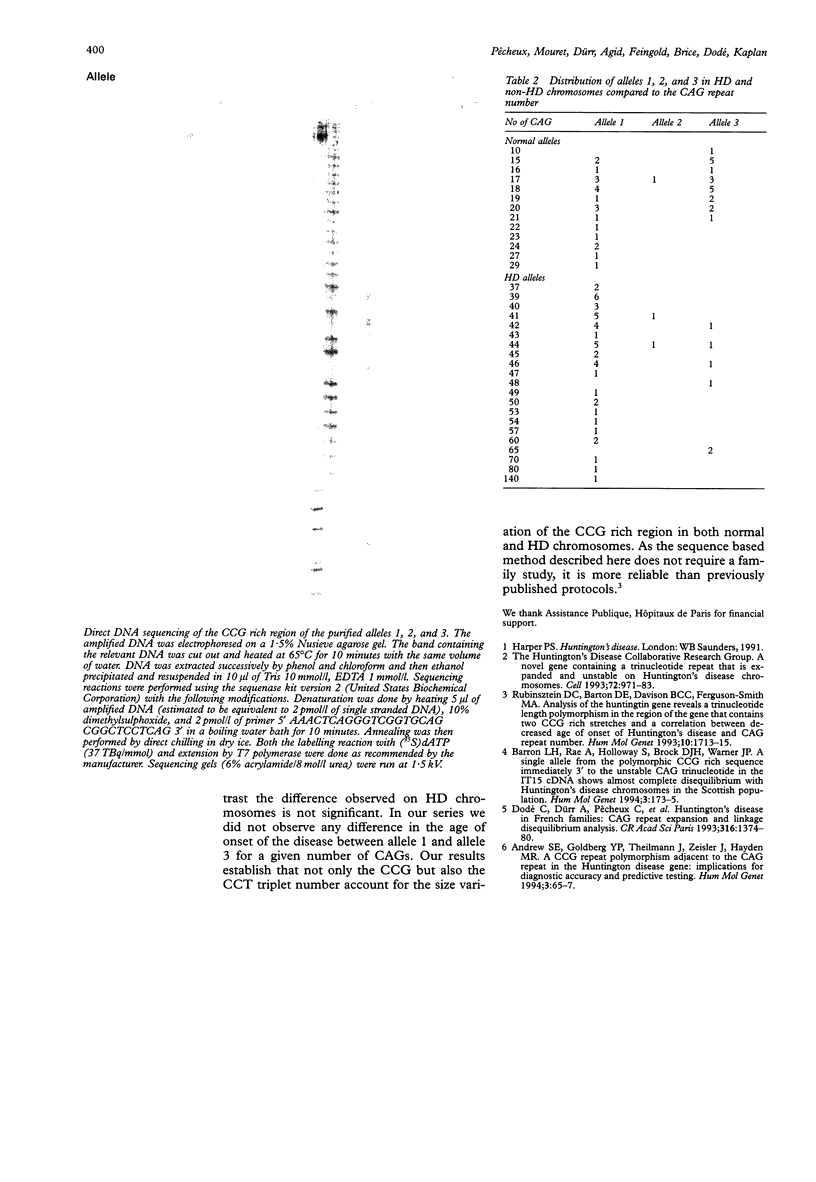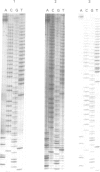Abstract
The CAG expansion responsible for Huntington's disease (HD) is followed by an adjacent polymorphic CCG repeat region which may interfere with a PCR based diagnosis. We have sequenced this region in 52 unrelated HD patients, from both normal and HD chromosomes. Fifty percent of the normal alleles were (CCG)7(CCT)2, 48% (CCG)10(CCT)2, and 2% (CCG)7(CCT)3. In contrast (CCG)7(CCT)2 was found in 85% of the HD alleles which represents significant linkage disequilibrium with the HD mutation.
Full text
PDF

Images in this article
Selected References
These references are in PubMed. This may not be the complete list of references from this article.
- Andrew S. E., Goldberg Y. P., Theilmann J., Zeisler J., Hayden M. R. A CCG repeat polymorphism adjacent to the CAG repeat in the Huntington disease gene: implications for diagnostic accuracy and predictive testing. Hum Mol Genet. 1994 Jan;3(1):65–67. doi: 10.1093/hmg/3.1.65. [DOI] [PubMed] [Google Scholar]
- Barron L. H., Rae A., Holloway S., Brock D. J., Warner J. P. A single allele from the polymorphic CCG rich sequence immediately 3' to the unstable CAG trinucleotide in the IT15 cDNA shows almost complete disequilibrium with Huntington's disease chromosomes in the Scottish population. Hum Mol Genet. 1994 Jan;3(1):173–175. doi: 10.1093/hmg/3.1.173. [DOI] [PubMed] [Google Scholar]
- Dodé C., Dürr A., Pêcheux C., Mouret J. F., Belal S., Bachner L., Agid Y., Kaplan J. C., Brice A., Feingold J. Huntington's disease in French families: CAG repeat expansion and linkage disequilibrium analysis. C R Acad Sci III. 1993 Nov;316(11):1374–1380. [PubMed] [Google Scholar]
- Rubinsztein D. C., Barton D. E., Davison B. C., Ferguson-Smith M. A. Analysis of the huntingtin gene reveals a trinucleotide-length polymorphism in the region of the gene that contains two CCG-rich stretches and a correlation between decreased age of onset of Huntington's disease and CAG repeat number. Hum Mol Genet. 1993 Oct;2(10):1713–1715. doi: 10.1093/hmg/2.10.1713. [DOI] [PubMed] [Google Scholar]



